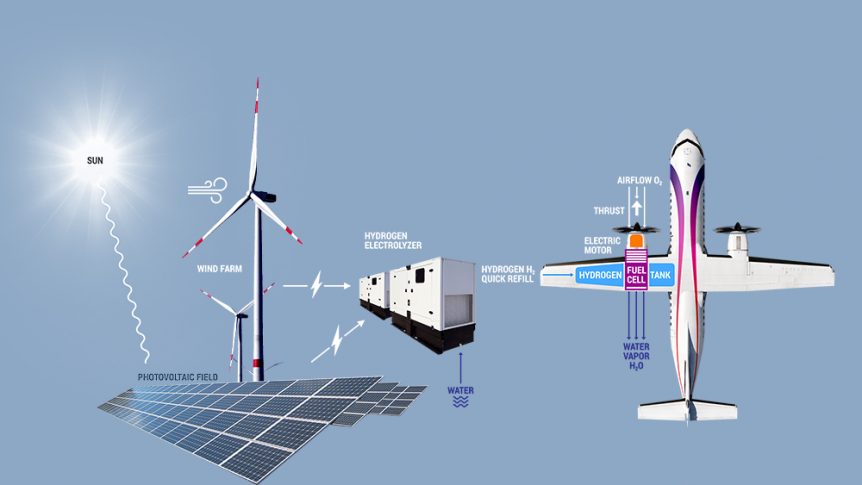Tuesday, June 23, ZeroAvia flew a hydrogen-powered Piper Malibu from Cranfield Airport in England., eight time zones from ZeroAvia’s home base in Hollister, California. Flown by Andrew Dixon, that and a subsequent flight gained extra publicity for “a James Bond stunt pilot*” helming the first electric aircraft capable of carrying passengers from a United Kingdom airport. Dixon reported that the battery-powered Piper Malibu needed 10 per cent less distance for take-off and climbed faster than normal. The Airplane Was the Real Star Reflecting the high-flying status of the test pilot, the airplane, part of a government-funded “HyFlyer” project, flew two missions on two days of 15 and 25 minutes each. Its two automotive-based batteries easily carried the six-passenger aircraft on its tours of the Bedfordshire countryside. The second of two Piper Malibus to be converted by ZeroAvia, the craft will be converted to hydrogen power before an October or November “300-mile flight from Orkney to an airport on the Scottish …
Princeton Solar Cell is “Black Hole for Light”
A great deal of the light that falls on solar cell panels does little to generate electricity, with a high percentage bouncing off pointlessly. Princeton researchers have confronted this issue with a layered assembly, otherwise known as a subwavelength plasmonic cavity. Developed by Princeton University researcher Stephen Chou and a team of scientists, the cavity dampens reflections and traps light. According to Princeton’s announcement, “The new technique allowed Chou’s team to create a solar cell that only reflects about 4 percent of light and absorbs as much as 96 percent. It demonstrates 52 percent higher efficiency in converting [direct] light to electrical energy than a conventional solar cell.” Overall, the team was able to increase solar cell efficiency a total of 175 percent with their nanostructured sandwich by capturing not only direct sunlight, but angled rays and diffuse light that occurs on cloudy days. MIT researchers recently reported attempts to gather varying wavelengths of light to effect the same type of …
Spinach, Photosynthesis, and Solar Energy
Spinach is the Rodney Dangerfield of the vegetable kingdom, and despite the best efforts of nutritionists, Popeye, and school lunch ladies to boost its respect levels, goes unwanted by many. But not by the team at Vanderbilt University who have combined it with silicon in a “biohybrid” solar cell. According to Vanderbilt’s David Cliffel, associate professor of chemistry, “This combination produces current levels almost 1,000 times higher than we were able to achieve by depositing the protein on various types of metals. It also produces a modest increase in voltage.” Cliffel collaborated on the project with Kane Jennings, professor of chemical and biomolecular engineering. “If we can continue on our current trajectory of increasing voltage and current levels, we could reach the range of mature solar conversion technologies in three years.” Over 40 years ago, scientists found that Photosystem 1 (PS1), a protein involved in photosynthesis, continued to produce photosynthetic energy even after it was removed from its host plant. …

